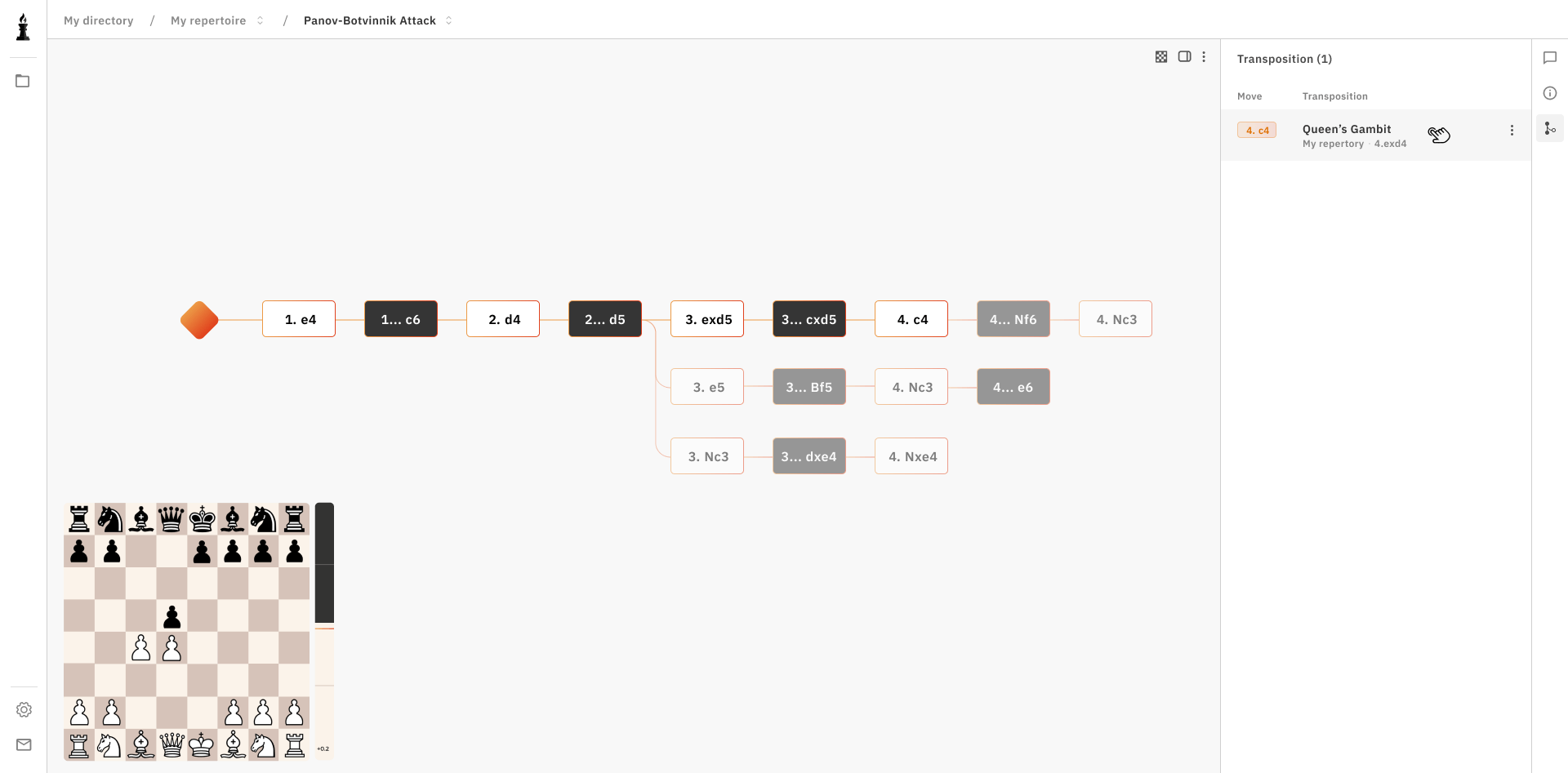Modern chess tools often fail to visualize transpositions in openings. ChessFlare addresses this issue by offering a comparison of lines that lead to the same position across all repertoires stored in your ChessFlare directory.
Add tabs with possible transpositions to all repertoires in your directory

By clicking on a move in your ChessFlare tree, identical positions that appear multiple times in your repertoire will be available in the transpositions tab. This allows you to easily visualize how different sequences of moves can lead to the same position.
Comparator of move sequences that lead to an identical position.

We have conceptualized a page that allows you to compare sequences of moves that lead to the same position. This enables you to visualize two lines, essentially a transposition, in a tree structure.
Frequently Asked Questions
What is transposition in chess?
Why are transpositions important in chess?
How to memorize chess openings?
How to memorize chess transposition?